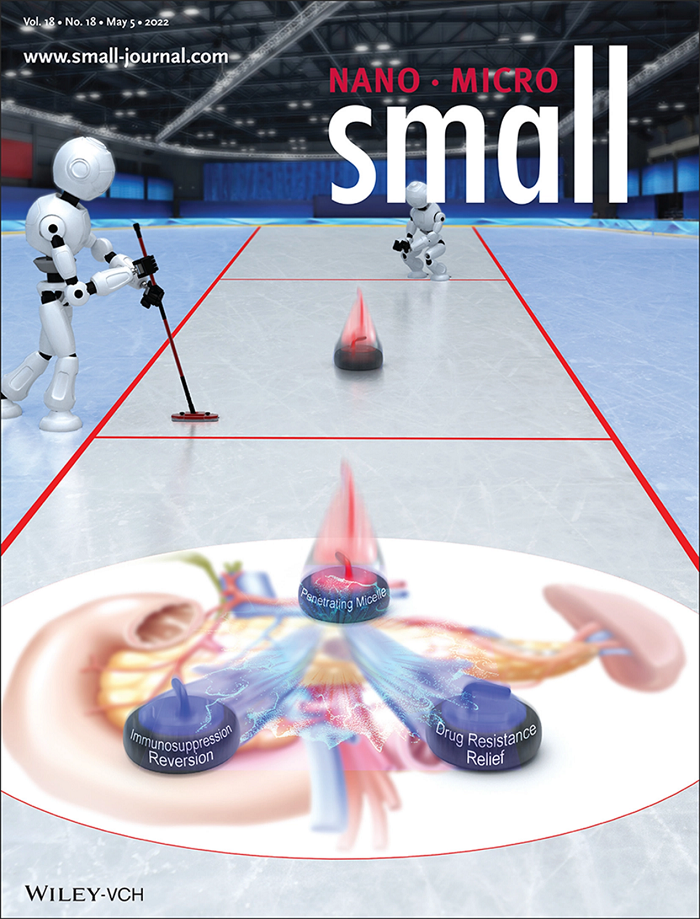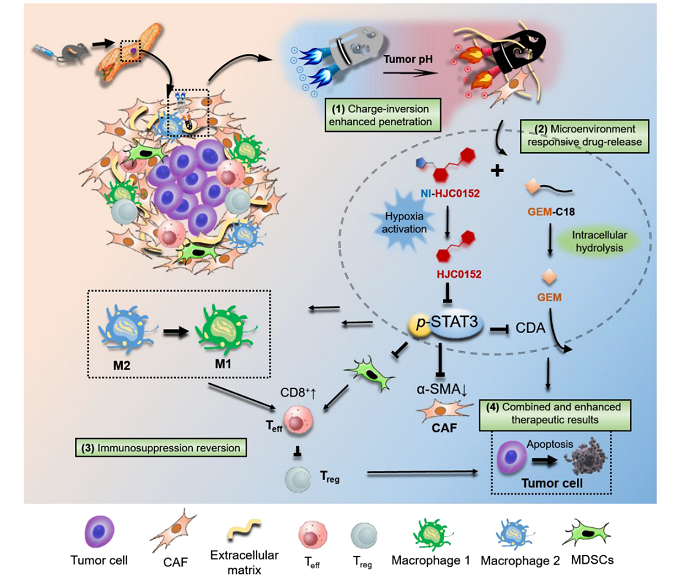

Figure 1. This work was published in Small and selected as the Front Cover of the current issue. The illustration makes clever use of the kill two birds with one stone strategy used in curling to describe the concept of the work, which is to achieve effective treatment of pancreatic cancer by reversing immunosuppression and dismantling drug resistance, while honoring the recently concluded Beijing Winter Olympics.
Along with an increased global incidence, pancreatic cancer (PDAC) shows the worst prognosis, a 5-year survival rate of less than 5%. Despite ongoing research, PDAC has developed greater drug resistance due to its prominent feature of connective tissue proliferation in the mesenchyme, which raises intra-tumor pressure. Gemcitabine, the first-line chemotherapeutic agent against PDAC, is often used in combination with drugs or therapies that target the stroma, however, there are some drawbacks to the outcomes of these therapies. Because stromal lysis caused by these therapies accelerates the spread and metastasis of tumor cells, the best approach should be to deepen the penetration of chemotherapeutic agents while maintaining the outer stroma of PDAC to avoid induced metastasis.
Notably, another tricky puzzle in PDAC treatment is the immunosuppressive microenvironment, where most immune cells of the pancreatic tumor microenvironment are hijacked by the tumor and lead to immunosuppression and even supporting tumor progression. And myeloid-derived suppressor cells (MDSCs) play a key role in mediating the immune escape.
Recently,associate Professor Sun Tao of the Department of Pharmacy has developed a nanodrug delivery system based on charge reversal strategy to overcome the dense matrix of pancreatic cancer and re-educate the tumor immunosuppressive microenvironment. The relevant papers were published in the international journal Small, with the title “Penetrating Micelle for Reversing Immunosuppression and Drug Resistance in Pancreatic Cancer Treatment” and was selected as the Front Cover of the current issue.

igure 2. The charge reversal drug delivery system designed in this work can respond to the tumor micro-acidic microenvironment to achieve charge reversal from negative to positive charge for deep penetration and drug delivery; and achieve prodrug activation in the pancreatic cancer hypoxic microenvironment for STAT3 target inhibition to synergize with the co-loaded gemcitabine, ultimately achieving both reversal of immunosuppression and alleviation of drug resistance.
In response to the above characteristics of pancreatic cancer, the research group developed a multifunctional drug delivery system combining lipid-modified gemcitabine and stroma-targeted drug HJC0152 to overcome the above difficulties and successfully achieve a deep level drug delivery. Specifically, charge reversal at the tumor site was achieved by constructing amphiphilic block materials responsive to the tumor acidic microenvironment, and the block materials encapsulated two drugs by forming micelles: hydrophobic gemcitabine could improve the drug resistance of tumor cells and enhance drug toxicity and the lack of oxygen-responsive drug HJC0152, which specifically targets STAT3 targets, plays a role in re-educating the whole tumor microenvironment.
Drs. Qinjun Chen and Yu Wang from the group, and Dr. Qingbing Wang from Ruijin Hospital are the first authors of the paper, and Prof. Tao Sun and Chen Jiang are the corresponding authors of the paper. The study was supported by the National Natural Science Foundation of China.
DOI: https://onlinelibrary.wiley.com/doi/10.1002/smll.202107712